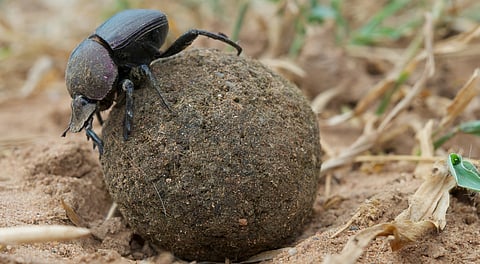Climate-fuelled El Nino events are devastating butterflies, beetles and other tropical insects
Recent research highlights the alarming impact of climate-fuelled El Niño events on tropical insects, including butterflies and beetles.
These events, intensified by climate change, are causing significant biodiversity loss and disrupting ecological functions.
The study underscores the urgent need for global efforts to understand and mitigate the effects of climate change on these vital species and their ecosystems.
Insects are arguably the most important animals on the planet. Their variety is unparalleled in nature, and they carry out vital tasks such as pollinating plants and providing food for other animals.
But all is not well in the insect world. Research over the last few years has shown sustained declines in insect species and numbers. It appeared Earth was witnessing a global-scale crash in insects — and climate change was partly to blame.
The evidence was mostly confined to temperate regions in the Northern Hemisphere. But our new research — published today in Nature — shows it’s also happening in the tropics, where most of Earth’s species live.
We found significant biodiversity loss in spiders, as well as insects including butterflies and beetles. The likely culprit is long-term changes to the El Niño cycle, caused by climate change. It suggests the life-support system underpinning the tropics is at serious risk in a warmer world.
Uncovering the effects of El Niño
El Niños vary massively across tropical regions but are often characterised by hot and dry conditions (as opposed to the cool and moist conditions of La Niña).
Alternating El Niño and La Niña events can naturally cause many insects to come and go. That’s due to changes in temperature and moisture levels which can affect insect breeding, life cycles and behaviour.
But as climate change worsens, strong El Niño events are becoming more frequent and intense. We wanted to know how this affected insects in tropical regions.
To find out, we examined 80 existing studies of insects in relatively pristine tropical forests — mostly from the tropical Americas. We linked that data to measures of strength in El Niño and La Niña through time.
We found cause for concern. El Niño events appear to cause a rapid decline in both insect biodiversity, and the ecological tasks they perform. These trends were persistent and highly unnatural.
Several types of insects have become rarer in the tropical Americas over recent decades. These included butterflies, beetles and “true bugs” — insects from the order Hemiptera distinguished by two sets of wings and piercing mouthparts used to feed on plants. Butterflies in tropical Asia were also declining.
The strongest declines were in rare insects that would naturally decrease during El Niño. These insect populations would usually bounce back in a La Niña. But climate-fuelled El Niños are causing many populations to fall so far, they cannot recover.
Drastic changes to forests
Our findings suggest the diversity of tropical insects could be chipped away with every El Niño event. This is not just a problem for the species themselves, but other parts of the ecosystem that depend on them.
Our research also involved modelling the decomposition and consumption of leaves by insects across the tropical Americas, Asia and Africa. Both processes are crucial to the health of tropical forests.
Decomposition fluctuated in line with the abundance of termites, which are probably the most important decomposers in the tropics. And worryingly, the amount of live leaves consumed by insects appears to have crashed in recent decades. This correlated strongly with the crash in butterflies and beetles.
These drastic changes may have implications for food webs and other organisms that rely on insects.
A difficult future ahead
Our research could not take in the huge diversity of tropical insects – most of which have not yet been formally described by scientists. But it points to a difficult future for insects — and their habitats — as climate change worsens.
Little data exists on insect numbers in Australia’s Wet Tropics, in Queensland. However, monitoring work is underway at facilities such as the Daintree Rainforest Observatory. Such projects will help us better understand changes in insect biodiversity under climate change.
More research is also needed at other locations around the world. Given the fundamental role insects play in supporting life on Earth, the urgency of this work cannot be overstated.
Nigel Stork, Emeritus Professor in the Centre for Planetary Health and Food Security, Griffith University
Adam Sharp, Postdoctoral Research Fellow, Invertebrate Ecology and Conservation, University of Hong Kong
This article is republished from The Conversation under a Creative Commons license. Read the original article.

